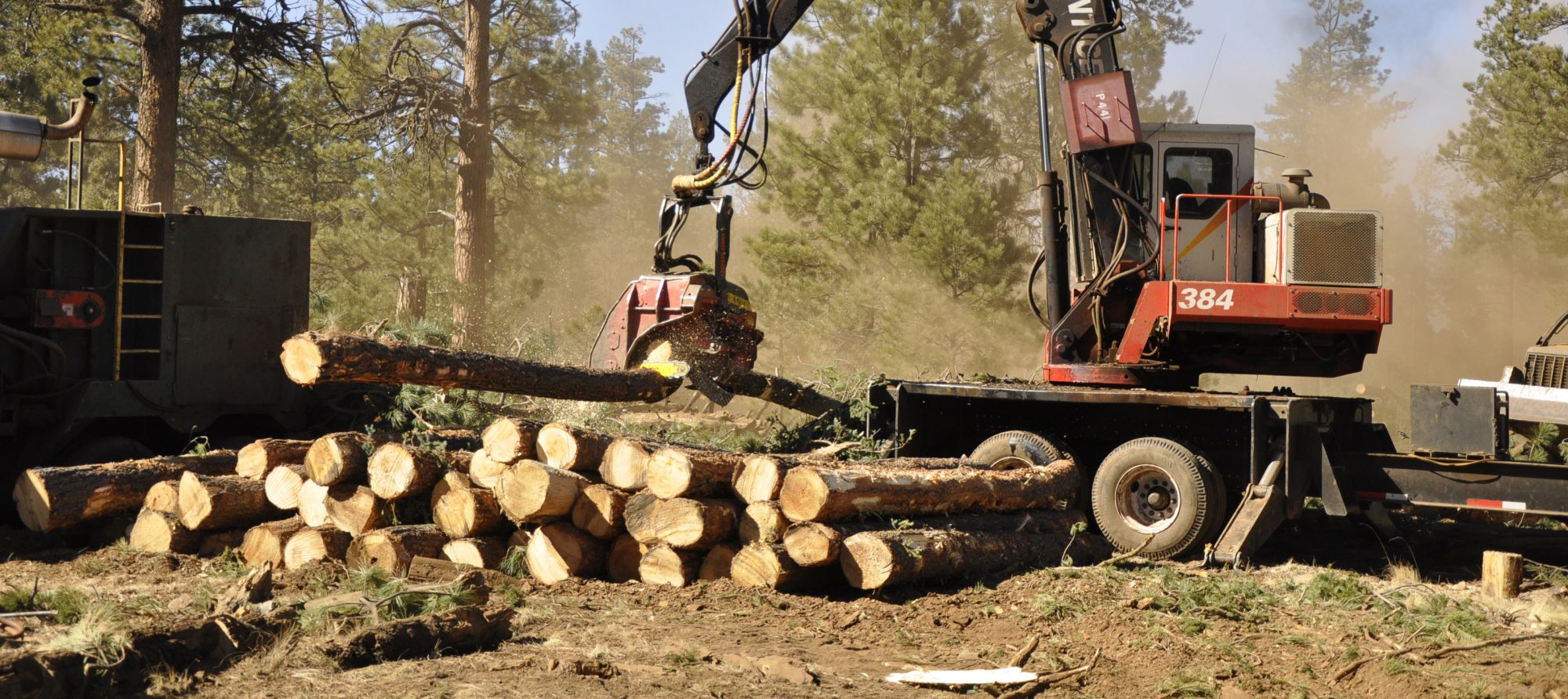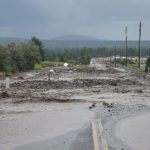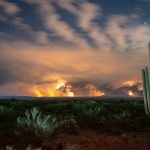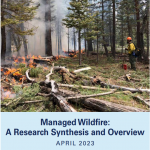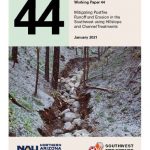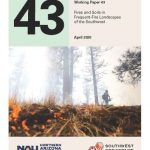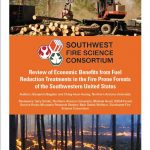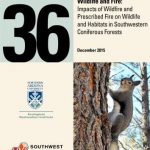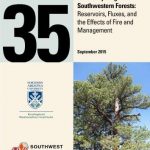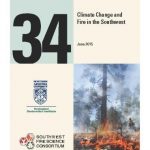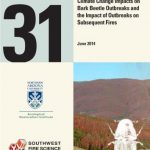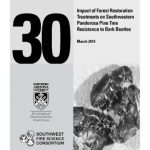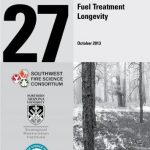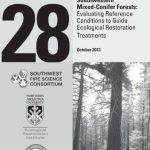Best available wildland fire science summaries on hot topics across the Southwest.
Fire in the Sonoran Desert
An overview of a changing landscape. The expansion of the grass-fire cycle in the deserts of North America is driving ecosystem level transformation from patchy desertscrub to invasive grassland. A novel fire regime in the Sonoran Desert is forcing a new approach to land management, where there are currently more questions than answers. What is … Read more “Fire in…
Managed Wildfire: A Research Synthesis & Overview
All wildfires in the United States are managed, but the strategies used to manage them vary by region and season. “Managed wildfire” is a response strategy to naturally ignited wildfires; it does not prioritize full suppression and allows the fire to fulfill its natural role on the landscape, meeting objectives such as firefighter safety, resource … Read more “Managed Wildfire:…
Mitigating Postfire Runoff and Erosion
Wildfires in the southwestern US are getting larger, more frequent, and more severe due to changing climatic conditions like rising temperatures and prolonged drought (Singleton et al. 2018, Mueller et al. 2020). Catastrophic wildfire events directly impact communities, ecosystems, and cultural resources—and can pose continuing hazards long after the fire is extinguished. Flooding and erosion … Read more “Mitigating Postfire…
Fire and Soils in Frequent-Fire Landscapes of the Southwest
Working Paper 43 by Dan Binkley, Adjunct Faculty, School of Forestry, Northern Arizona University Forests and soils interact so strongly that any major change in one of them leads to a reshaping of the other. Fires consume fuels in a few hours that it took vegetation years or decades to produce. Forest soils are both … Read more “Fire and…
Forest Treatments Impacts to Water Quantity
Working Paper 37 by Dan Binkley Read The influence of restoration treatments on hydrologic output in fire-adapted forests of the Southwest PDF.
Economic Benefits of Forest Treatments
This paper presents a review of the types of economic benefits that arise from fuels-reduction treatments in the southwestern U.S. to inform policy discussions about the economic impacts and benefits of the treatments.
Fire and Wildlife Impacts
This paper focuses on the use and effects of wildfire (natural ignition), prescribed fire (purposeful ignition), and restoration treatments (thinning and prescribed fire) on terrestrial fauna in dry coniferous forests primarily in the southwestern U.S. Working Paper 36 by Tzeidle N. Wasserman RELATED CONTENT
Carbon Cycling in Southwestern Forests
The intent of this working paper is to explain the basics of the carbon cycle detailing how much carbon moves through vegetation, water, and soils over time. The paper also summarizes where current science suggests that carbon cycling patterns are most likely to change in the coming years to decades, and how management can influence … Read more “Carbon Cycling…
Climate Change and Fire in the Southwest
The intent of this working paper is to summarize the current state of scientific knowledge about climate change predictions in the Southwest as well as the pathways by which fire might be affected. Working Paper 34, June 2015, Author: Larissa L. Yocom Kent RELATED CONTENT
Fire Regime Reconstruction Methods
This working paper discusses several methods for reconstructing historical fire regimes.Each of these methods will be discussed in terms of advantages, disadvantages, inherent uncertainties, and assumptions as well as temporal and spatial precision. The potential value and limitations for reconstructing historical forest structure and composition with each method are also briefly covered. Working Paper 32, … Read more “Fire Regime…
Climate Change, Bark Beetles, and Fire
This working paper summarizes how climate change influences presence of bark beetles, how this impacts drought-stressed trees, and the role fires play when drought and beetles occur. Working Paper 31, June 2014 by Monica Gaylord
Forest Treatments and Bark Beetles
This working paper highlights current research about the effects of restoration treatments on ponderosa pine tree resistance/susceptibility to bark beetles. Working Paper 30, March 2014, Author: Monica Gaylord
Fuel Treatment Longevity
There are several ways to evaluate fuel treatment effectiveness: observations, case studies, mathematical models, and empirical studies. Within these four categories, there are several methods that can be used to evaluate the effectiveness of fuel treatments both immediately after treatment and over time. This paper summarizes the goals, effects, and advantages of various treatment actions; … Read more “Fuel Treatment…
SW Mixed Conifer Forests: Evaluating Reference Conditions to Guide Fuel Treatments
This working paper covers three topics to guide treatments in mixed-conifer forests of the Southwest: 1) describes the current knowledge of mixed-conifer historical reference conditions for fire regimes, stand structure, and species composition in the Southwest (Arizona, New Mexico and adjacent areas); 2) provides field diagnostics to assess reference conditions; and 3) offers land managers … Read more “SW Mixed…
Protecting Old Trees from Prescribed Burning
One of the real problems land managers encounter when they work in areas with old-growth trees is the possibility that prescribed burns—a recommended and useful restoration technique, especially when proceeded by mechanical thinning—may kill or seriously injure these biologically and socially important trees. This tricky situation developed in part because decades of fire suppression have … Read more “Protecting Old…

